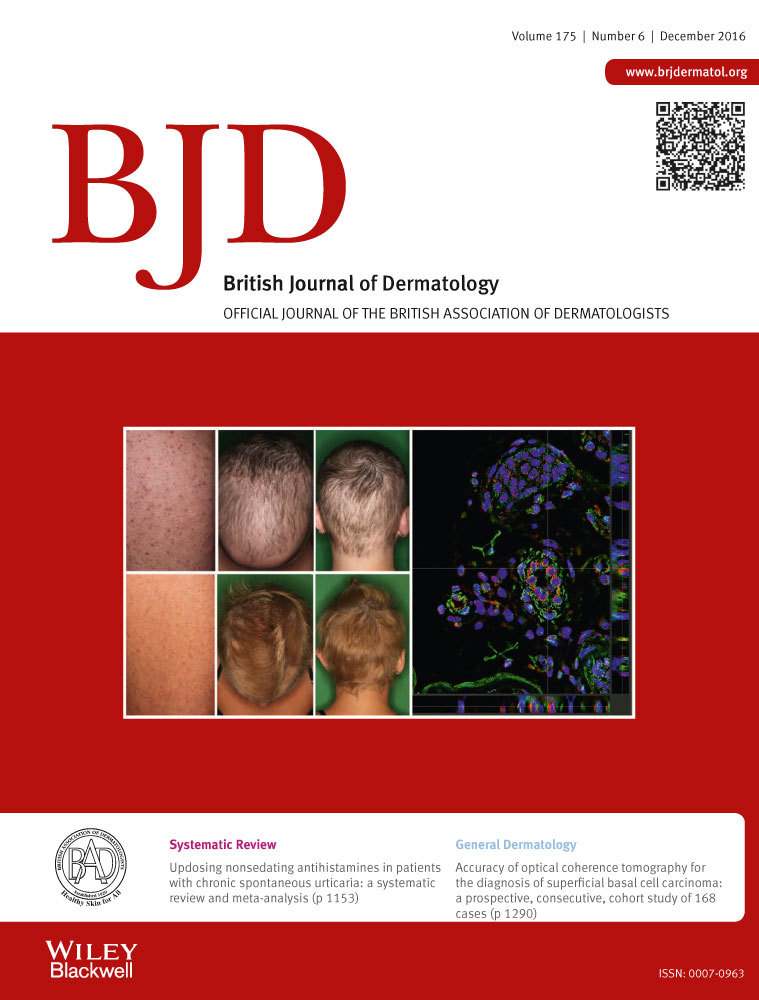The prognostic significance and impact of the CXCR4–CXCR7–CXCL12 axis in primary cutaneous melanoma†
Summary
Background
Expression of the chemokine receptor CXCR4 is known to regulate melanoma metastasis to distant sites with high expression of the CXCL12 ligand. However, the prognostic impact of CXCR4 expression and potential for autocrine-mediated activation of prosurvival mitogen-activated protein kinase signalling remains enigmatic. Furthermore, expression of the decoy receptor CXCR7 within the local cutaneous melanoma microenvironment remains undefined.
Objectives
To define the contribution and prognostic impact of CXCR4–CXCR7–CXCL12 signalling in primary cutaneous melanomas and the immediate tumour microenvironment.
Methods
Immunohistochemical/immunofluorescent expression of CXCR4, CXCR7 or CXC12 was analysed in human metastatic melanoma cell lines, primary cutaneous cell types and a retrospective cohort of primary melanomas/benign naevi. CXCL12 secretion by melanoma/cutaneous cells was evaluated by enzyme-linked immunosorbent assay, and autocrine CXCR4–CXCL12 signalling was investigated by addition of a CXCL12-neutralizing antibody.
Results
CXCR4 expression was significantly higher in primary melanomas that subsequently metastasized after 7 years (P = 0·037). Stratification for American Joint Committee on Cancer (AJCC) stage II disease revealed significantly decreased disease-free survival in patients with > 50% CXCR4 expression (P = 0·036), while comparative analysis of CXCL12 expression in the adjacent epidermis of all AJCC stage melanomas revealed increased CXCL12 correlated with prolonged time to metastasis (P = 0·014). CXCR7 was expressed within the primary melanoma microenvironment but was absent on primary tumours. Addition of anti-CXCL12 to BRAF-mutant melanoma cells resulted in downregulation of phospho-CXCR4 and phospho-extracellular signal-related kinase, indicating autocrine CXCR4–CXCL12 signalling.
Conclusions
CXCR4 expression defines a potential prognostic biomarker for AJCC stage II melanoma. Moreover, targeting the CXCR4–CXCR7–CXCL12 axis may represent a novel therapeutic strategy to prevent early melanoma progression.




